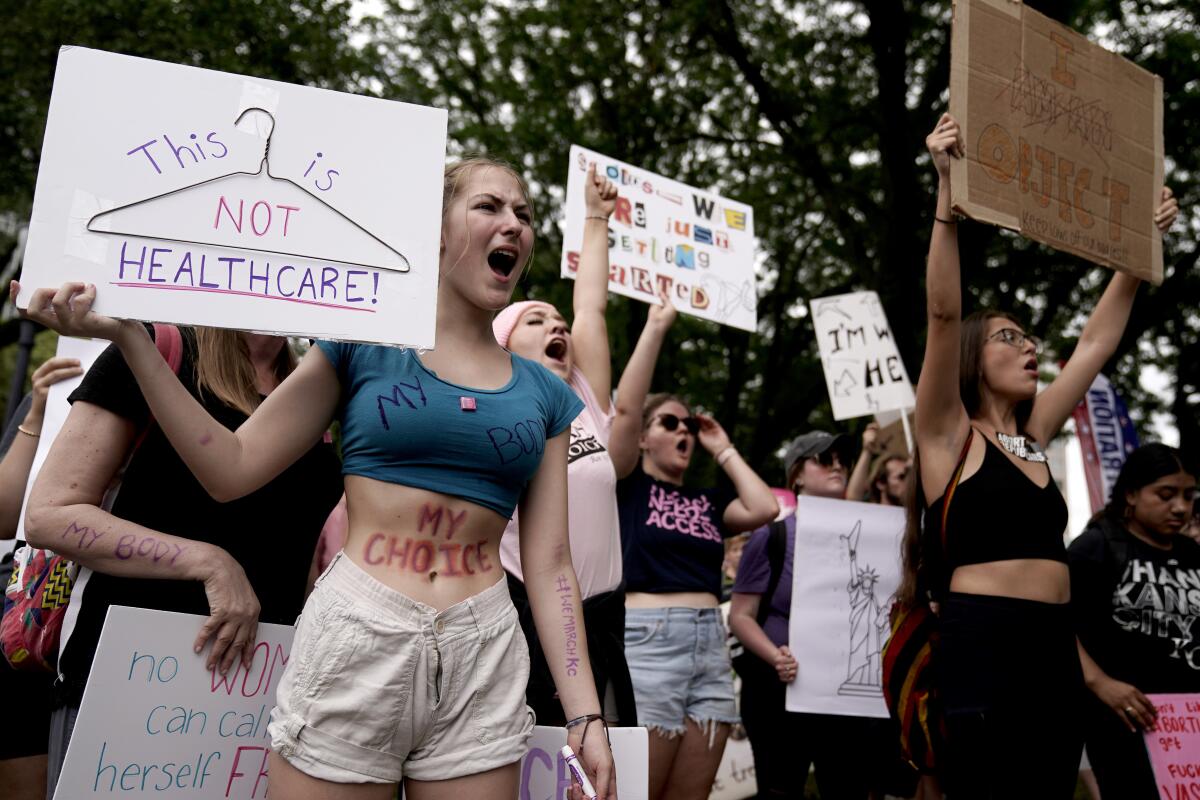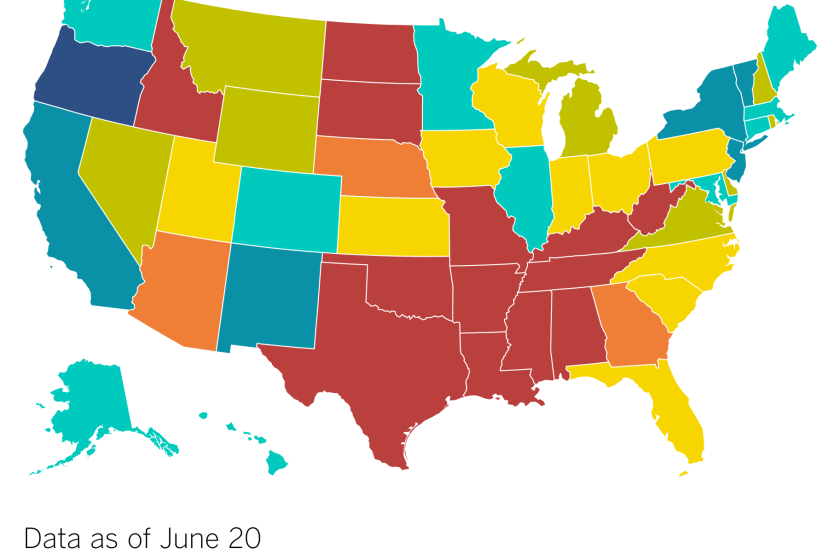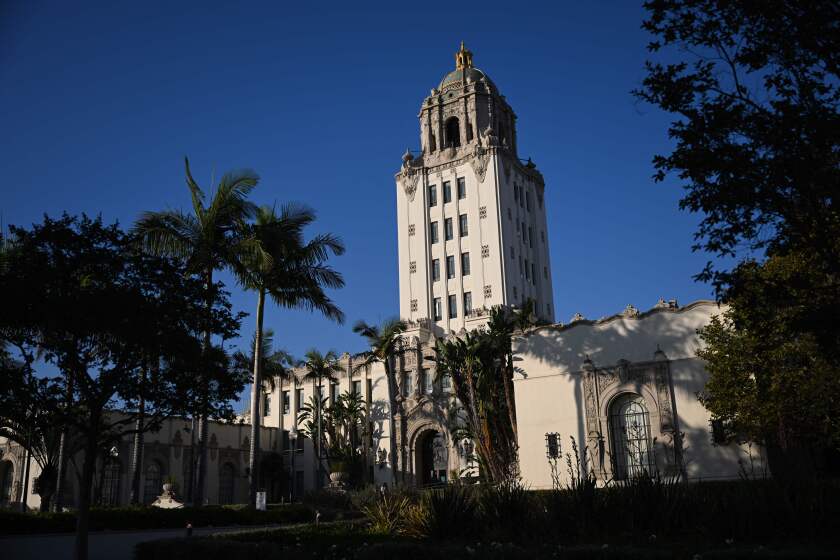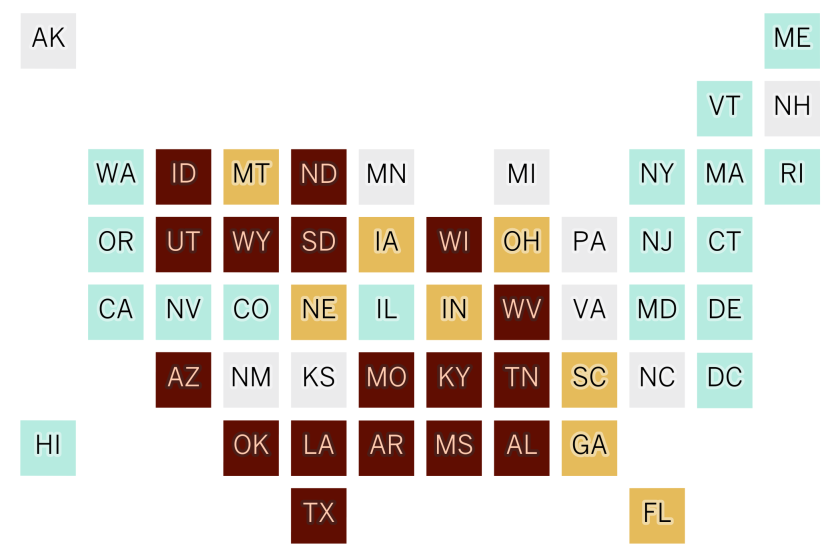Why ‘viability’ is dividing the abortion rights movement

JEFFERSON CITY, Mo. — Reproductive rights activists in Missouri agree they want to get a ballot measure before voters in the fall to roll back one of the strictest abortion bans in the country and ensure access. The sticking point is how far they should go.
The groups have been at odds over whether to include a provision that would allow the state to regulate abortions after the fetus is viable, a concession supporters of the language say will be needed to persuade voters in the conservative state.
It’s a divide that’s not limited to Missouri.
Advocates say the disagreements there and in other states where activists are planning abortion-rights measures this year have resurfaced long-brewing ruptures among reproductive rights advocates. The divisions are most acute in Republican-leaning or closely divided states, where some worry that failing to include limits related to viability will sink the measures.
The conflict has been especially sharp in Missouri, where dueling strategies have complicated efforts to push ahead with a ballot measure seeking to reinstate the right to abortion.
A year after the Supreme Court overturned Roe vs. Wade, leaving abortion decisions to states, where is abortion banned or protected? What comes next?
“The movement is grappling with its value system,” said Bonyen Lee-Gilmore, the Kansas City-based vice president of communications for the National Institute for Reproductive Health, which opposes viability clauses.
Viability is generally used to refer to the phase, typically around 23 or 24 weeks into pregnancy, when a fetus would be able to survive outside the uterus. But medical experts say it creates an arbitrary dividing line and stigmatizes abortions later in pregnancy, which are exceedingly rare and usually the result of serious complications, such as fetal anomalies, that put the life of the woman or fetus at risk.
Pamela Merritt, executive director of Medical Students for Choice, which opposes viability clauses, calls it “a social construct, an arbitrary line in the sand. It’s not a medical term, and we need to back away from perpetuating these damaging terms that are a legacy of Roe that we don’t need to resurrect.”
The Supreme Court’s 1973 Roe vs. Wade decision established a constitutional right to abortion but also created a framework that allowed states to regulate abortions at certain points during pregnancy. Since the current court overturned it in 2022, “Roe is the floor, not the ceiling” became a rallying cry for activists who vowed to rebuild access, especially for marginalized communities, Merritt said.
An abortion provider accuses Beverly Hills of colluding with antiabortion activists and pressuring a landlord to block an all-trimester clinic’s opening.
Yet measures proposed for this year’s ballot in Missouri, Florida and Arizona have been replicating Roe’s viability framework, as did an Ohio constitutional amendment guaranteeing the right to abortion that passed last year.
Shortly after that election, a Black Ohio woman who miscarried in her bathroom was charged with abuse of a corpse. The amendment’s viability clause was cited as justification for allowing the case to move forward, though a grand jury ultimately dismissed the case.
Merritt said the charges are part of a larger effort by antiabortion forces in Ohio to use the viability clause to limit the reach of the amendment. Many of these efforts will wind up in Ohio’s largely conservative court system, she added.
“When you hand them the scalpel, you can’t turn around and be surprised when they start cutting,” she said.
In South Dakota, the local Planned Parenthood affiliate has pulled out of ballot measure efforts for a proposal that allows lawmakers to restrict abortion after the first trimester. In a statement, the group said the proposal fails to protect abortion rights.
The logistics of accessing abortion are about to get more complicated, with at least 26 states set to ban the procedure after the fall of Roe vs. Wade.
In Oklahoma, viability has been central to conversations about a potential ballot measure to repeal the state’s abortion ban, said Rebecca Tong, co-executive director of Trust Women, which provides abortion care. Tong said viability is “not something we want written into the Constitution in Oklahoma.”
But Lauren Brenzel, campaign director for Floridians Protecting Freedom, said viability has not been a major focus in conversations around ballot measure language in a state that currently bans the procedure after six weeks of pregnancy. The campaign recently reached the necessary number of verified signatures to qualify an abortion-rights measure for this year’s ballot that includes a viability clause.
“Viability is the framework that Florida had used until the legislators started passing abortion bans,” Brenzel said. “What we know is that voters understand this, and we see it as clear and concise language that matches with what the standard was in Florida for a long time.”
Viability language in Florida’s proposed measure has already opened the door to a legal challenge from the state’s Republican attorney general, who has asked the state Supreme Court to keep the measure off the ballot because of vagueness over the meaning of the term.
Abortion pills: A Trump-appointed conservative judge’s upcoming ruling could have the biggest effect in blue states like California. What to know.
A few states, including California and Vermont, have enshrined abortion rights in their constitutions without viability limits. Proposed amendments in Maryland and New York also don’t mention viability.
Missouri has found itself in the center of the national debate over the issue as abortion rights groups have split over which of 11 versions of a measure to support for the ballot. The petitions have been tied up in court for months after being challenged by Republican Secretary of State Jay Ashcroft.
Complicating the effort is another initiative petition — one proposed by strategist Jamie Corley, a Republican. It would allow abortions up to 12 weeks into pregnancy and include exceptions for rape, incest or to protect the life of the mother until viability.
Corley said those restrictions are what’s feasible to pass in Missouri, where Republicans banned abortions except in medical emergencies.
“Pro-life, antiabortion voters, a lot of them are still OK with legal but limited access,” Corley said.
Some reproductive rights groups advocating for versions of a more permissive ballot measure with a viability clause raised concerns that antiabortion forces would attack proposals without one by saying it was an attempt to legalize abortion “up until birth” or “abortion on demand,” terms considered misleading by medical experts.
Marjorie Dannenfelser started out as a pro-choice Republican. After changing her mind in college, she set out to outlaw abortion across the United States.
Sarah Standiford, national campaigns director of Planned Parenthood Action Fund, said reproductive rights groups must balance their desire for the most expansive access with proposals that can withstand legal challenges and qualify for the ballot.
She acknowledged that such an approach “may ultimately advance a policy that is far short of the ideal.”
Other activists say they’re increasingly frustrated by compromises they see as based on fear and repeating past mistakes in Roe vs. Wade that prevented abortion access for the most vulnerable, including people with higher-risk pregnancies, those with lower incomes, people of color and people living in rural communities.
“It is a restriction under the guise of reproductive freedom,” said Jennifer Villavicencio, senior director of public affairs and advocacy at the Society of Family Planning.
In Missouri, it’s yet to be seen how and if activists divided over viability will come together. To many, there’s a sense of urgency to restore at least some rights.
“Real lives are on the line, and that has to be part of these political considerations,” said Mallory Schwarz, executive director of Abortion Action Missouri. “We have to consider both what is politically possible and also look at why that is possible in that moment.”
Fernando reported from Chicago.
More to Read
Sign up for Essential California
The most important California stories and recommendations in your inbox every morning.
You may occasionally receive promotional content from the Los Angeles Times.















